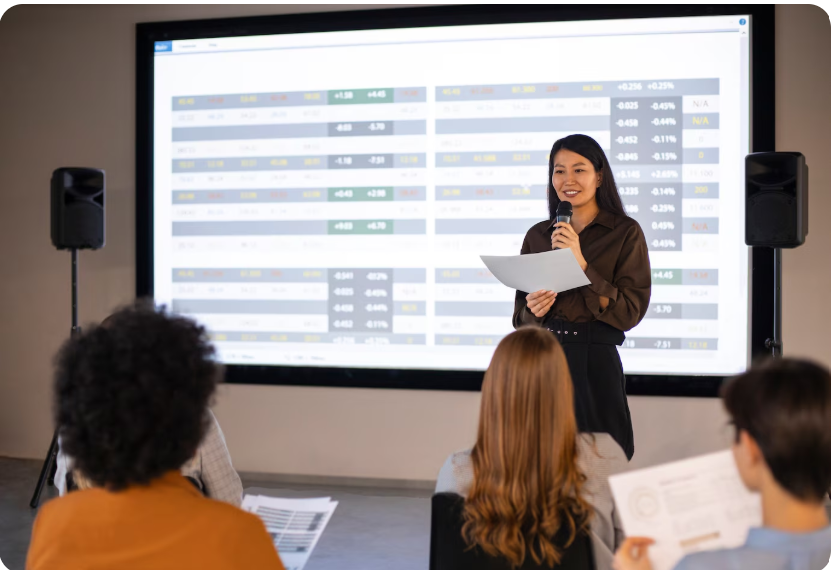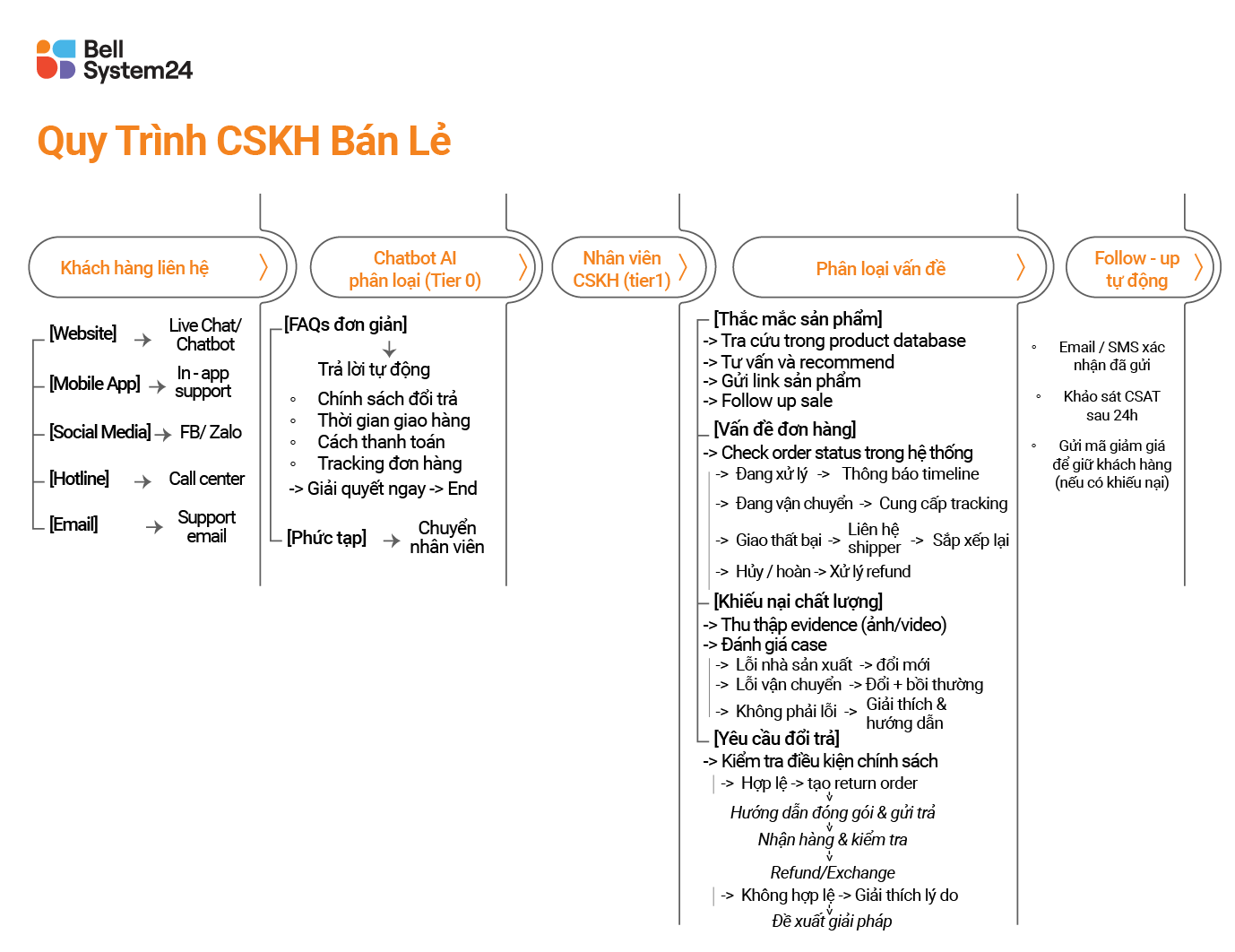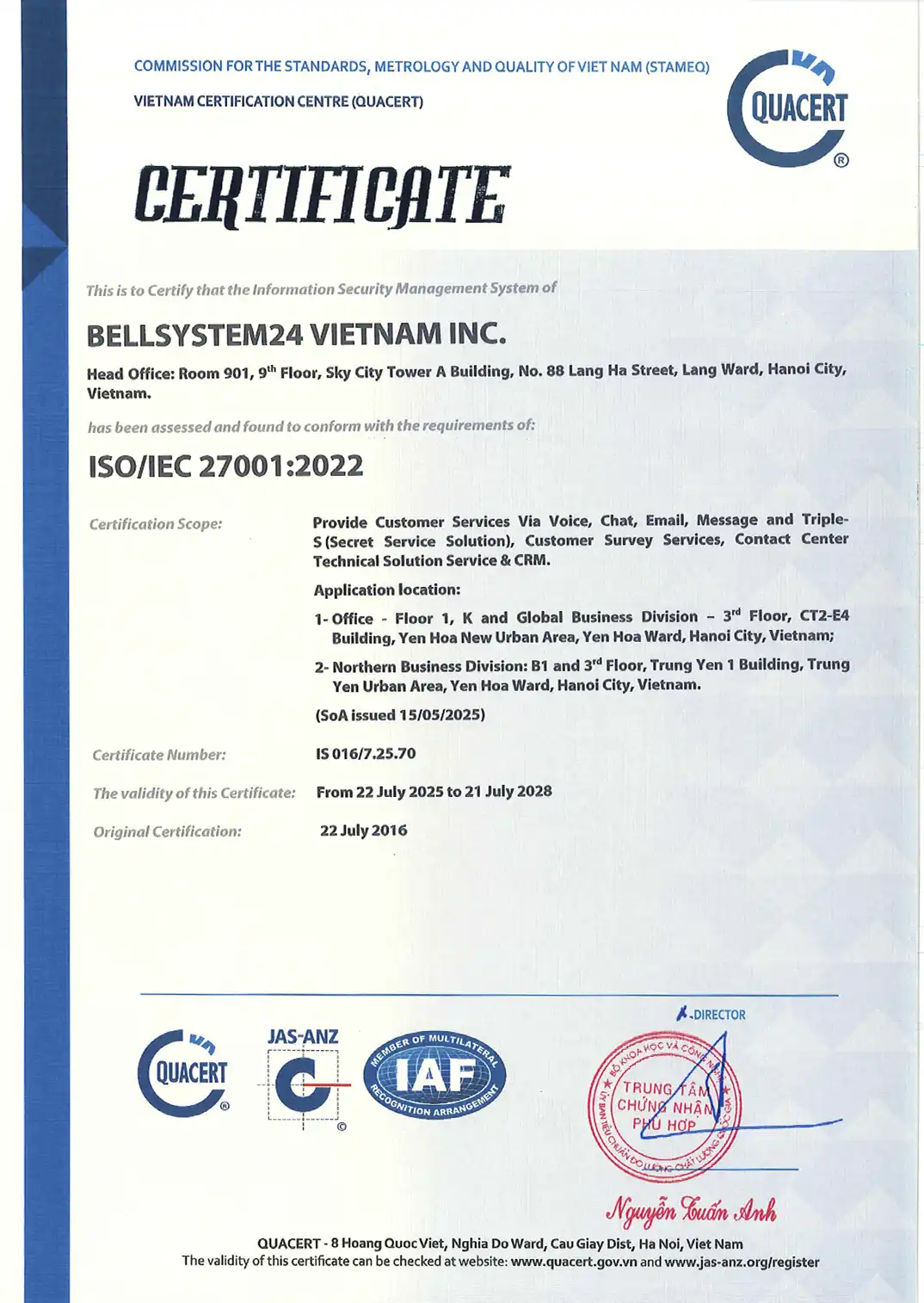In an era where human resource training has become a key factor in determining a company's competitiveness, developing an internal team of instructors is no longer an option but a necessity. However, how can you accurately assess where your instructors are on their development journey and what skills they need to improve? This is where competency mapping plays a crucial role.

Competency Map: More Than Just a List of Skills
Many people confuse competency maps with lists of required skills. In reality, competency maps are complex, multidimensional systems, much like geographical maps that allow you to determine your current location and plan your route to your desired destination.
At Bellsystem24 Vietnam, we have witnessed significant changes since implementing this method. Instead of simply evaluating instructors based on whether they are "good" or "not good," the competency map helps us understand each individual's strengths, areas for improvement, and most importantly, a specific development path for each person.
Imagine you have two instructors: Lan and Minh. Lan excels at conveying complex knowledge in a simple way, but struggles when dealing with students who have a negative attitude. Minh, on the other hand, is great at creating a positive learning environment, but often loses track of time and fails to complete the planned curriculum. Without a detailed competency map, you might only see the final results and make general assessments. But with this tool, you'll know exactly which aspects to invest in developing for each individual.
The Architecture of a Comprehensive Competency Map
An effective competency map cannot be based solely on intuition or subjective experience. It must be built on a scientific foundation, with a clear and measurable structure.
1. Foundation layer
Includes core knowledge of the field of expertise. This is not only a deep understanding of the content, but also includes the ability to update, synthesize, and apply knowledge flexibly. A lecturer may be an expert in their field, but if they do not know how to "translate" in-depth knowledge into language that is easy for learners to understand, they have not yet achieved perfection.
2. Teaching Skills Level
It's where you make a real difference. It's not just about standing in front of a crowd and talking. In fact, it involves dozens of intricate micro-skills:
- Communication skills
- How to use classroom space to enhance interaction
- The ability to read and understand students' body language in order to adjust teaching methods.
We once had a highly skilled instructor who consistently received feedback that he was "dry and unengaging." Upon careful analysis of his competency map, we discovered that he excelled at structuring content logically but lacked storytelling skills and the ability to use illustrative examples. After focusing on developing these two aspects, the change was rapid and noticeable.
3. Classroom Management Skills Level
Often underestimated but extremely important. A lecturer may have profound knowledge and excellent communication skills, but if they do not know how to handle diverse students with varying levels of understanding, learning motivation, and personalities, the final outcome will still be limited.
Step-by-Step Guide to Building a Competency Map
Building a competency map cannot be done mechanically using a ready-made template. Below is the specific 7-step process that Bellsystem24 Vietnam has successfully applied:
Step 1: Define the Core Competency Framework
First, you need to establish a competency framework consisting of four main groups.
- Expert Knowledge Group Includes: In-depth knowledge of the field (assessed through tests or case studies), ability to update new knowledge (monitored through the number of courses/seminars attended), and ability to synthesize complex information (measured through the ability to create content from multiple sources).
- Teaching Skills Group More details: Logical lesson design (checklist of 15 criteria from beginning to end), communication skills (evaluated through 8 factors such as speaking speed, intonation, gestures), and ability to use support tools (from slides and videos to interactive tools).
- Class Management Team Includes: Diverse learner management (4×4 matrix based on personality and participation level), effective time management (monitoring via % to ensure timely program completion), and creating a positive learning environment (measured through satisfaction surveys and retention rates).
- Personal Development Group Includes: Self-learning and improvement (personal development plan), teamwork (peer feedback score), and adaptability to change (evaluated through performance when implementing new methods).
Step 2: Design a 5-Level Detail Scale
Each competency is divided into 5 distinct levels with specific behavioral descriptions. For example, for "Questioning Skills":
Level 1 – BeginnerOnly ask simple Yes/No questions, usually reading from a prepared script. Don't know how to handle it when students don't answer.
Level 2 – BasicYou can ask basic open-ended questions such as "What do you think about...", but you don't know how to explore the answers in depth.
Level 3 – CompetentUse a variety of question types (open-ended, closed-ended, leading, probing), know how to wait and create space for learners to think.
Level 4 – ProficientDesign a logical sequence of questions to guide learners to a conclusion, adjusting questions based on the class's response.
Level 5 – ExpertUse questions as coaching tools, generate unexpected insights, and transform questions into profound learning experiences.
Step 3: Collect Multidimensional Data
Here, we apply the "360-degree assessment" method with four data sources:
- Self-assessmentInstructors self-assess using a 120-item questionnaire, with each competency having 8-12 specific scenario questions. For example: "When a student repeatedly interrupts, you would: A) Directly remind them, B) Enforce ground rules, C) Discuss privately during break time, D) Use redirect attention techniques."
- Learner feedbackConduct a post-course survey with 25 specific questions, not just general ones, but delving into each skill: "Did the instructor clearly explain complex concepts?", "Did you feel encouraged to participate in discussions?"
- Peer observationColleagues observe and evaluate using a 45-item checklist during three class sessions. Each item is scored on a scale of 1 to 5 with specific behavioral descriptions.
- Manager evaluationDirect supervisors evaluate based on results, feedback from internal customers, and the instructor's development potential.
Step 4: Build a Personal Competency Matrix
After gathering sufficient data, create a "heat map" for each instructor. This is a two-dimensional matrix: the horizontal axis represents competency groups, and the vertical axis represents five levels. Each cell is colored according to a scale: red (below expectations), yellow (average), green (good), blue (excellent).
What's unique is that we don't just show the current score, but also include a "trajectory arrow" – an arrow indicating the development trend over the past 6 months. This helps identify which instructors are progressing, who is stagnating, and who needs immediate intervention.
Step 5: Analyze the gap and determine the priority level
Not all skills are equally important. We use the "Impact vs Effort" matrix:
- High Impact, Low Effort (Quick wins): Prioritize development first
- High Impact, High Effort (Strategic projects): Long-term investment
- Low Impact, Low Effort (Fill-ins): Do when you have time
- Low Impact, High Effort (Thankless tasks): Avoid or outsource
For example, with instructor A scoring low on "Public speaking confidence" (High Impact, Medium Effort) and "Advanced PowerPoint skills" (Low Impact, Low Effort), we will focus on public speaking first.
Step 6: Design an Individual Development Plan (IDP)
Each instructor has a unique IDP with a 12-month timeline, divided into four quarters. Each quarter has two to three specific goals, diverse learning methods (formal training, mentoring, job rotation, self-study), and milestones to measure progress.
Specifically, we apply the 70-20-10 principle:
- 70% learning through practical work (stretch assignments, pilot projects)
- 20% learning from others (mentoring, peer learning)
- 10% formal education (courses, workshops).
Step 7: Continuous monitoring and adjustment
The monitoring system is designed with three frequencies: Weekly check-ins (15 minutes with manager), Monthly deep-dive (1-hour detailed review), and Quarterly recalibration (full competency map update).
The most important thing is cross-checking – ensuring consistency in evaluations between different managers.
Detailed Competency Map Template
Faculty Competency Assessment Matrix
A. PROFESSIONAL KNOWLEDGE (Weight: 25%)
A1. Depth of knowledge (0-5 points)
- Level 1: Basic understanding, usually reads from slides
- Level 3: Master the content and be able to answer most questions.
- Level 5: Expert, connected to many other fields
A2. Update capability (0-5 points)
- Measurement: Number of courses/workshops attended per year, number of articles/research papers read per month
A3. Practical applicability (0-5 points)
- Ability to provide case studies and real-world examples relevant to the student's work
B. TEACHING SKILLS (Weighting: 35%)
B1. Lesson Plan Design (0-5 points)
- Checklist of 12 criteria: Introduction, Clear learning objectives, Three-part structure, Reasonable timing, Interaction, End-of-lesson summary...
B2. Communication skills (0-5 points)
- Use voice (4 levels: Monotone → Dynamic)
- Body language (Measured through 8 factors: Eye contact, Gestures, Movement…)
- Storytelling ability (Scale from Facts-only to Engaging narratives)
B3. Interaction skills (0-5 points)
- Number of interactive methods used per class session
- Ratio of active participation time vs passive listening time
- The level of engagement of students with the class.
C. CLASSROOM MANAGEMENT (Weight: 25%)
C1. Handling diverse students (0-5 points) There are 4 types of students:
- Enthusiasm + High skills → Motivation, Development
- Enthusiasm + Low skills → Additional mentoring
- Lack of enthusiasm + High skills → Inspiring, motivating
- Lack of enthusiasm + Low skill level → Step-by-step guidance, motivation.
C2. Time Management (0-5 points)
- % completed the program on schedule.
- Ability to adjust when off course
- Balance between conveying content and interaction time.
C3. Conflict resolution (0-5 points)
- Handling disruptive, impulsive, and sensitive students.
D. PERSONAL DEVELOPMENT (Weighting: 15%)
D1. Growth mindset (0-5 points)
- Be open to feedback.
- Innovate teaching methods.
D2. Collaboration (0-5 points)
- Feedback from colleagues
- Frequency of knowledge sharing
How to Calculate Overall Points:
Final Score = (A × 0.25) + (B × 0.35) + (C × 0.25) + (D × 0.15)
Classification:
- 4.0-5.0Master Trainer (can teach classes) train the trainers)
- 3.5-3.9: Senior Trainer
- 3.0-3.4Competent Trainer
- 2.5-2.9Developing Trainer (requires coaching)
- <2.5Beginner (requires intensive training)
If you're looking for ways to elevate your internal faculty to new heights, Train the Trainer Program Our program will provide you with not only in-depth theoretical knowledge, but also practical tools to build and apply effective competency maps. This is an opportunity for you to learn from real-world experience and receive guidance on how to implement these tools within your own organization.
The journey to becoming a professional instructor begins with understanding where they currently stand. And the competency map is the key to unlocking that door to success.







